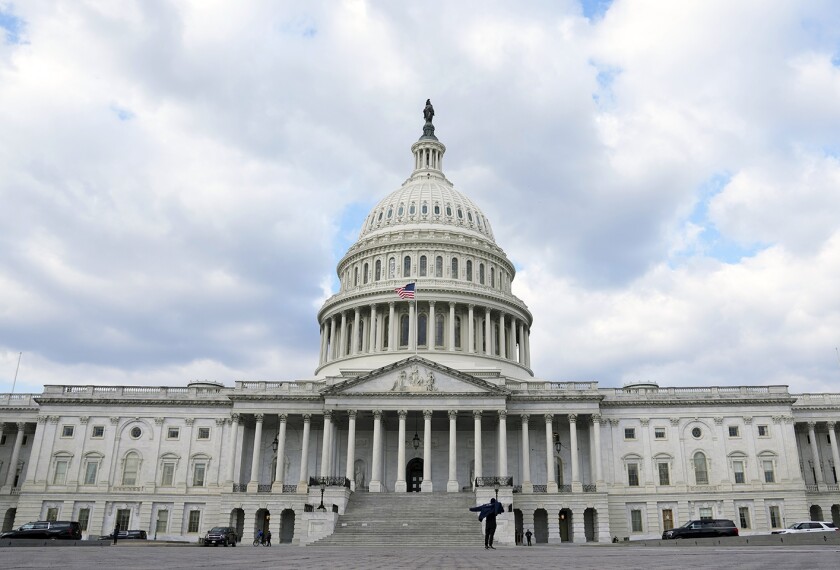First-term Gov. Ted Strickland announced last week that he wants to end Ohio’s private-school-voucher program aimed at students from some of the state’s most poorly performing schools and limit existing state spending on public charter schools.
“Wastefulness and giveaways can no longer be tolerated,” the Democrat said in his March 14 State of the State address to a joint session of lawmakers in Columbus. “That’s why my budget eliminates the EdChoice voucher program.”
Though the announcement “shocked” Susan C. Zanner, the executive director of School Choice Ohio, a statewide organization that promotes EdChoice and other school choice programs, the vouchers have faced controversy before.
Established in 2005, the program offers vouchers of as much as $5,000 each for up to 14,000 students in public schools that for three years have been in “academic emergency” or “academic watch,” the two lowest levels under Ohio’s accountability system. The program made headlines last summer when state officials acknowledged that, in a few cases, parents of children already in private schools had tried to enroll students in public schools where they would be eligible for the private-school-tuition aid. (“Ohio Moves to Stem Abuse of New Vouchers,” June 21, 2006.)
The state operates two other voucher programs—one for students living in Cleveland and another for autistic children—neither of which would be affected by the governor’s budget proposals.
“School vouchers are simply an opportunity for scams and gaming the system,” Sue Taylor, the president of the Ohio Federation of Teachers, a 20,000-member affiliate of the American Federation of Teachers, said in a press release.
But Lori Drummer, the director of state projects for the Phoenix-based Alliance for School Choice, a national advocacy group, took issue with that characterization.
“Today Gov. Strickland slammed the door of opportunity in the faces of 14,000 of Ohio’s poorest schoolchildren by calling for the elimination of the EdChoice program,” she said in a March 14 statement. “He is forcing these children to leave the schools they love and sentencing them to return to the staggeringly low-performing schools they fled.”
Several states have voucher programs aimed at students who have special needs, attend failing schools, or live in a particular city. Utah recently became the first state to adopt a universal voucher program, although ballot initiative efforts are underway to block its implementation this fall. (“Utah’s Broad Voucher Program Could Face Challenge,” Feb. 21, 2007.)
Critics of Ohio’s program have questioned its popularity. About 2,900 students received vouchers for the 2006-07 school year.
Read a complete transcript of Gov. Ted Strickland’s 2007 State of the State address. Posted by Ohio’s Office of the Governor.
But Megan Rudebeck, a spokeswoman for the Alliance for School Choice, said that the EdChoice participation rate should not be considered low for a large, new program. She said the Ohio program has the highest first-year participation rate of any school choice program with which her group has worked.
The application period for participation in the next round of Ohio’s program ends April 20.
“We’re not sure how the news will affect sign up for next year,” Ms. Rudebeck said. “Hopefully we’ll be able to work something out with the governor.”
Curbing Charters
In his $16.8 billion proposal for state K-12 education spending in the fiscal 2008-09 biennial budget, which represents a 13 percent increase in state spending over the current biennium, Gov. Strickland also would impose a moratorium on new charter schools and prohibit for-profit companies from running charter schools in the state.
“I believe the standards gap between our traditional public schools and other schools receiving public money is so glaring that we must act immediately,” he told lawmakers of both chambers assembled to hear his speech.
Gov. Strickland said a recent study commissioned by the state board of education recommended that the Ohio’s school-funding system rely less on local property taxes and that the state adopt a common accountability framework for all schools receiving state funding in order to eliminate poorly performing charter schools. (“Study Urges Top-to-Bottom Overhaul in Ohio,” Feb. 21, 2007.)
In response to that report and four separate decisions by the Ohio Supreme Court declaring the state’s school funding system unconstitutional, the governor wants to increase the percentage of state school funding of local schools from 49 in 2007 to 54 percent by 2009, costing the state $974 million. He also plans to increase the amount of per-pupil aid by 3 percent over the next two years and spend $10 million to expand the state’s pre-school offerings in fiscal 2008.




